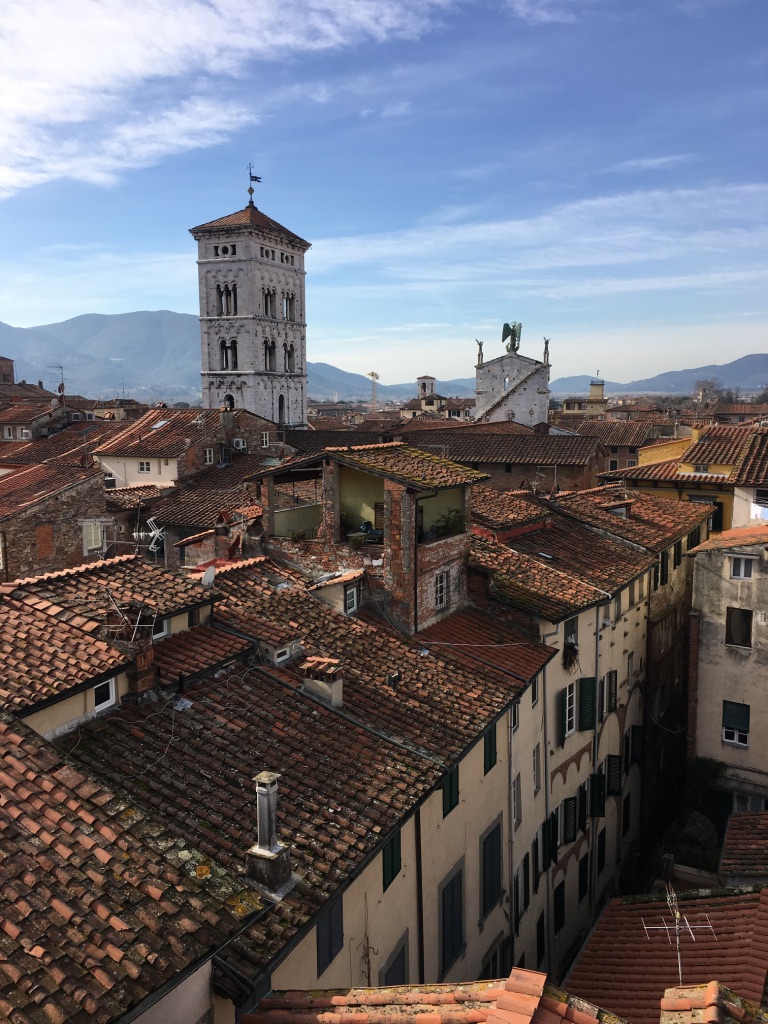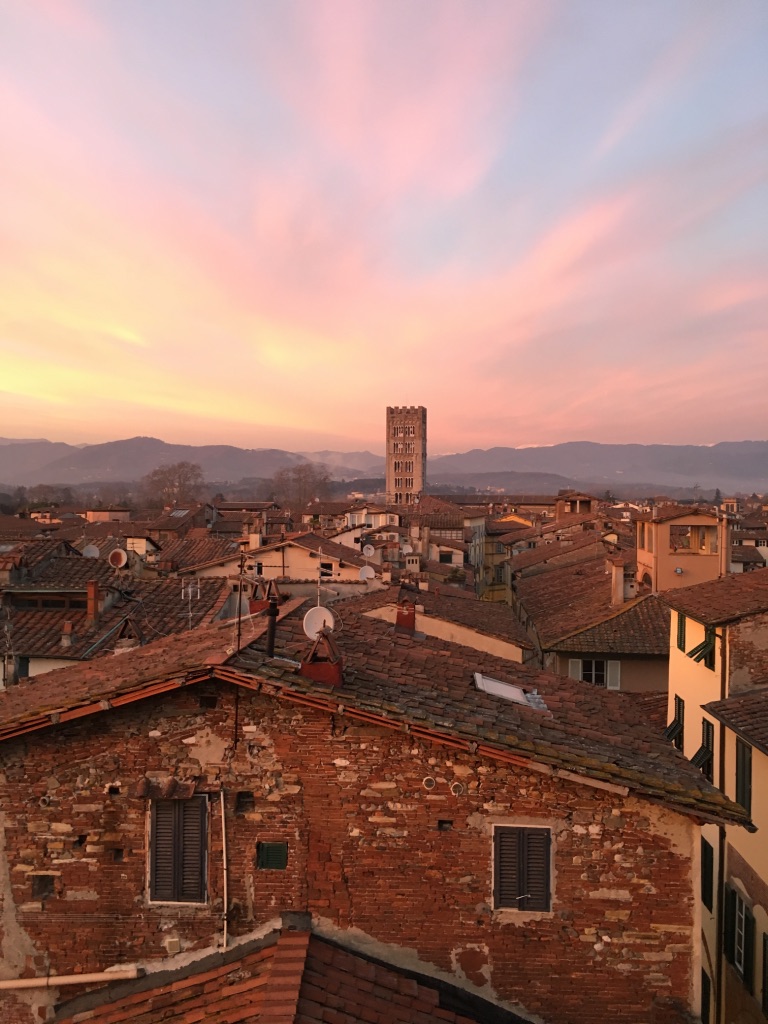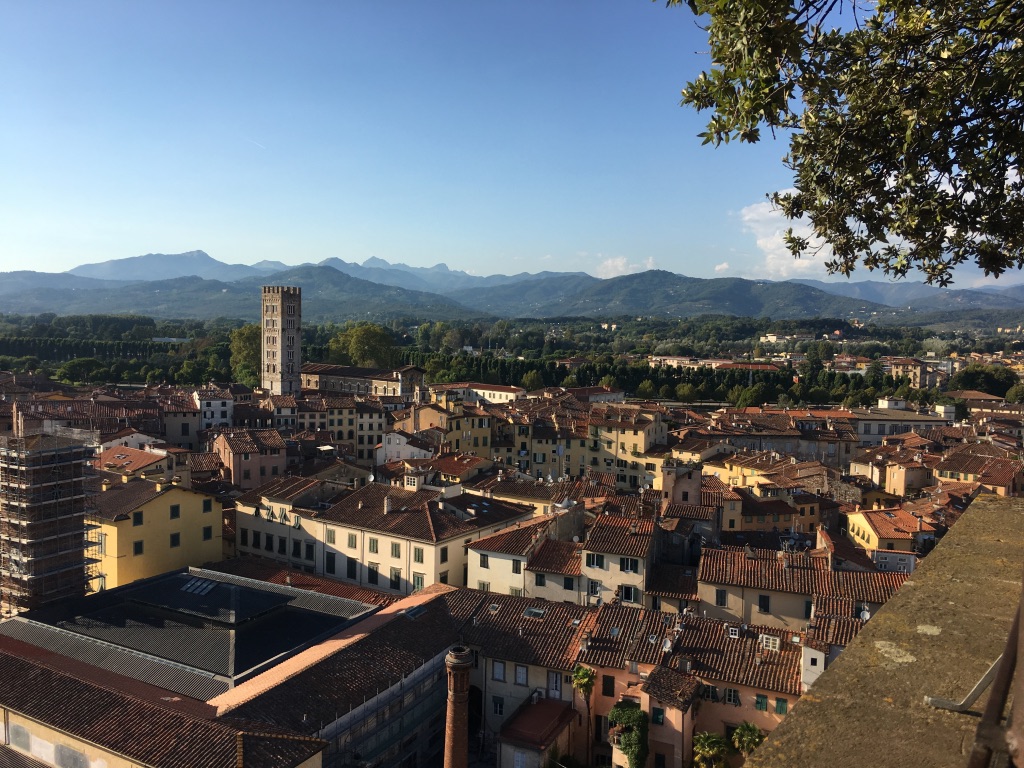Whilst living in Ferrara, Emilia Romagna, a British friend posed me the hypothetical question of where I would choose to live in Italy if I couldn’t live in Ferrara. I did not have to think long to come up with my answer because, while many would choose the perhaps more well-known cities or even a popular coastal town, I would rather opt for a hidden gem of a town found in the northwest of Tuscany: Lucca.
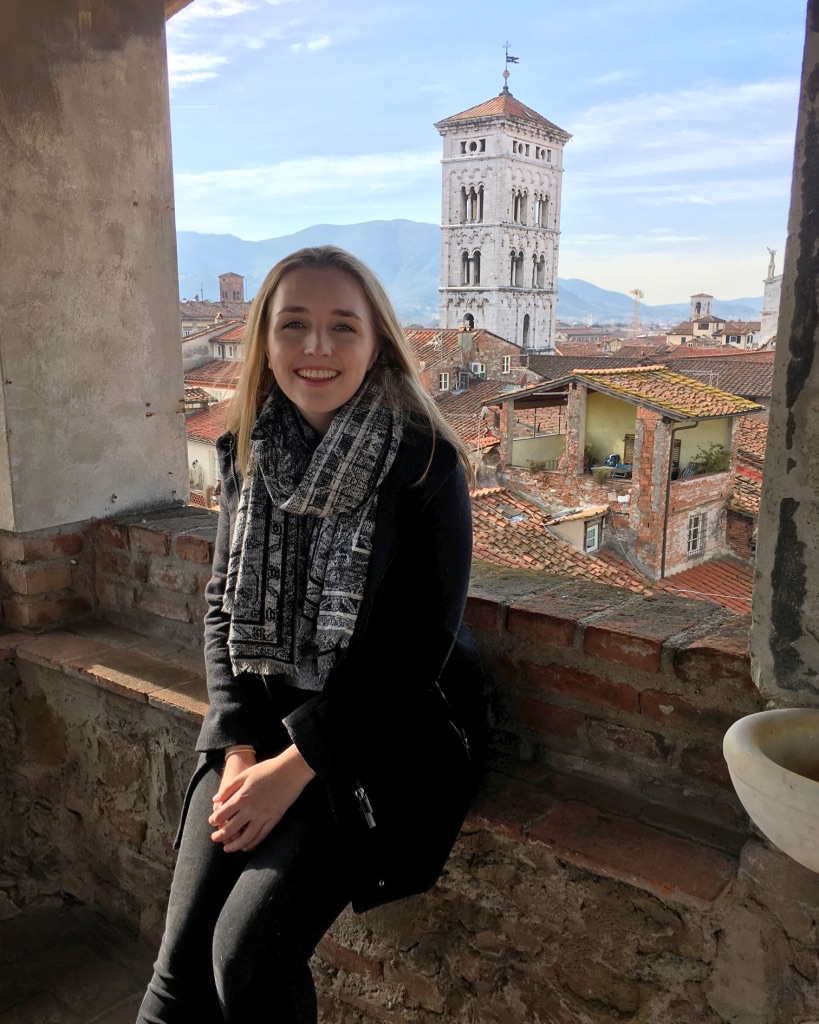
Where is Lucca?
Lucca can be found just a half hour’s drive from Italy’s Pisa, home of the Leaning Tower. With a population of just under 90,000, Lucca is a small but bubbly town, surrounded by well-preserved Renaissance walls which, similar to Ferrara, are popular for walking and cycling.
What can I visit?
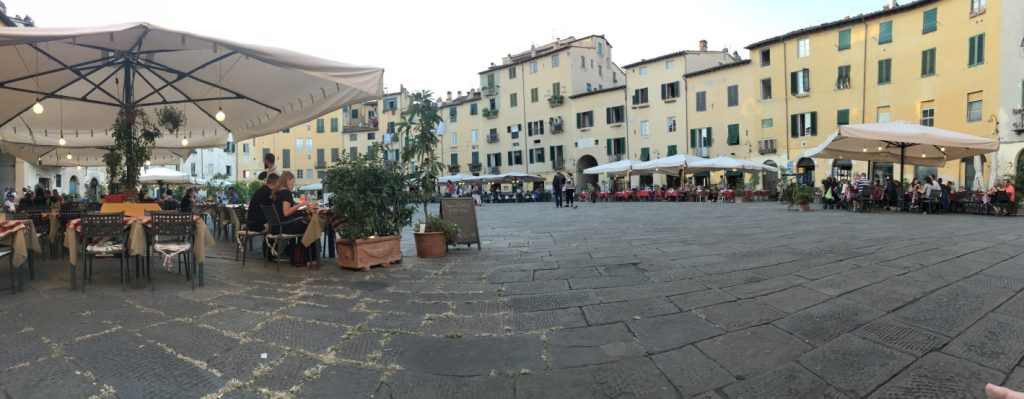
The best way to spend your time in Lucca is much like other cities and towns in Italy: lose yourself in the streets and just wander. There are, however, a couple of places you should be sure to check out during your visit. The Torre Guinigi, a fourteenth century tower located in the centre of the town, is a must-visit. From the top of the tower, known for its unique small garden and canopy of Holm oaks, you can see fantastic views of Lucca and the rolling hills of the Tuscan countryside.

Much like other Italian towns, Lucca’s cathedral cannot be missed. The cattedrale di San Martino has an impressive façade and its Romanesque features can be observed both inside and out. This, however, is not the only duomo to visit in Lucca. The church of San Michele in Foro has similarly impressive architecture and stands next to a large bell tower.
What is some typical cuisine?
When you start feeling a bit peckish, the perfect picturesque location to have lunch or dinner is in the Piazza dell’Anfi-teatro. This “square” which in reality is oval in shape, features many restaurants offering authentic Tuscan food. There are also souvenir shops, bars to have a coffee or something stronger, and ice cream parlours.
When dining out in a restaurant you might try some typical cuisine such as tortelli lucchese (meat ravioli), farinata (chickpea pancake), or some zuppa di farro (a local Tuscan soup made with beans and seasonal vegetables).
Outside Lucca
If you’re looking to get out of the walls, there are many private villas which open up their gardens to the public. These include Renaissance Villa Torrigiani, located in Camigliano and dating back to the 17th century, which has some beautiful fountains and grottos. The house is also open for visits but via guided tour only. Another is the Villa Reale di Marlia, a property which was bought by Napoleon’s sister, Elisa Bonaparte Baciocchi, in 1806. It is now privately owned by a couple who commissioned extensive restoration to different parts of the property, including the park and gardens.
For those interested in Lucca’s musical history, there is a museum dedicated to Lucca-born Puccini, a composer primarily known for his operas. There is also Museo Nazionale di Palazzo Mansi, Domus Romana, and various other sites which display proudly the history and culture of Lucca.
Plan A Day (or a few) in Lucca!
Whilst being a relatively small town in Italy, Lucca is the perfect place for a day trip, with a pleasant and relaxing atmosphere and plenty to do and see. Make sure not to miss it when planning your next holiday to Tuscany!
